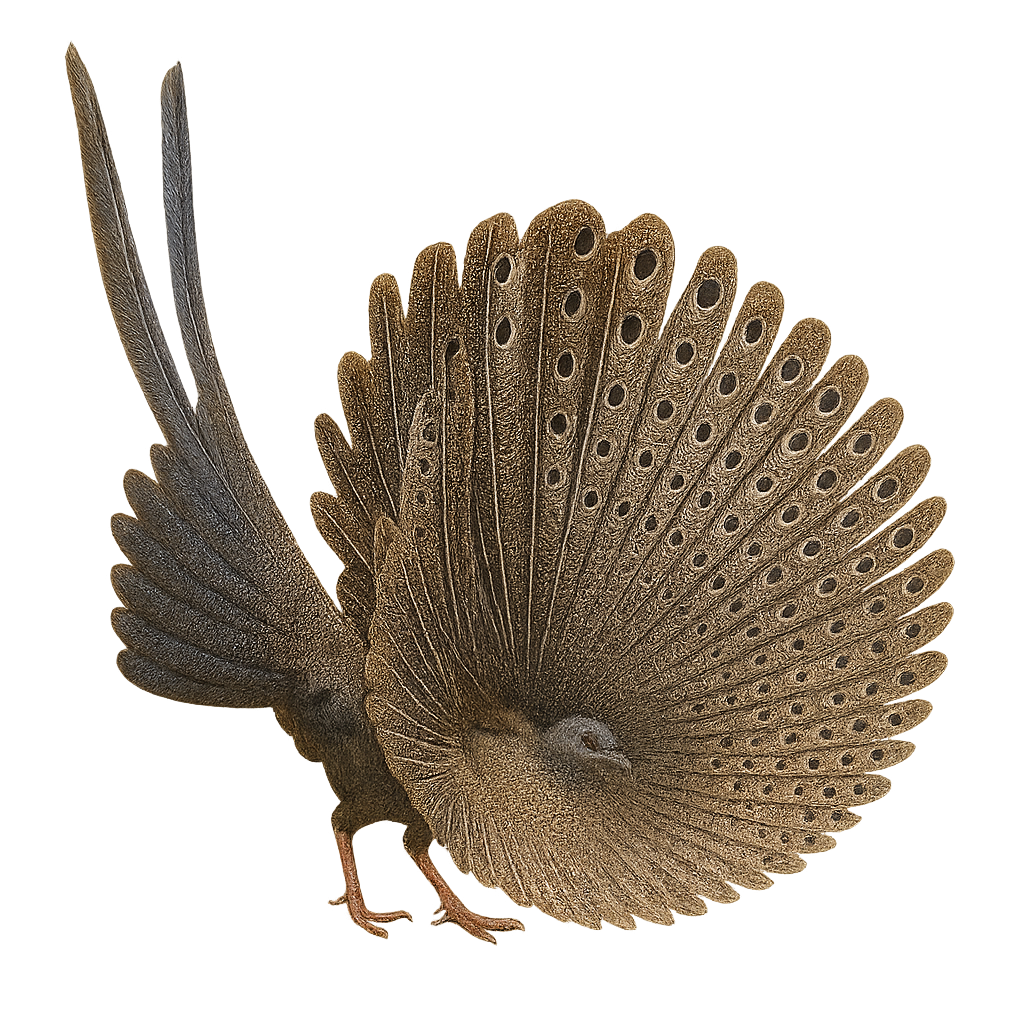Your wildlife photography guide.
Explore the great argus in detail, study its behavior, prepare your shots.
Where to observe and photograph the great argus in the wild
Learn where and when to spot the great argus in the wild, how to identify the species based on distinctive features, and what natural environments it inhabits. The WildlifePhotographer app offers tailored photography tips that reflect the great argus’s behavior, helping you capture better wildlife images. Explore the full species profile for key information including description, habitat, active periods, and approach techniques.
Great Argus
Scientific name: Argusianus argus

IUCN Status: Near Threatened
Family: PHASIANIDAE
Group: Birds
Sensitivity to human approach: Suspicious
Minimum approach distance: 10 m
Courtship display: February to June
Incubation: 24-25 jours
Hatchings: February to July
Habitat:
Tropical forests, dense undergrowth
Activity period :
Primarily active during the day, with peak activity in the morning and late afternoon.
Identification and description:
The Great Argus, or Argusianus argus, is a remarkable bird from the Phasianidae family, renowned for its spectacular plumage and fascinating courtship displays. Native to the tropical forests of Southeast Asia, this bird is distinguished by its long, ocellated feathers adorning its wings and tail. The male, larger than the female, uses these feathers to attract mates during elaborate courtship rituals. Primarily terrestrial, it prefers dense habitats where it can blend in. Although the Great Argus is a shy bird, it is sometimes seen in clearings searching for food, mainly fruits, insects, and small invertebrates. Its population is threatened by deforestation and hunting, leading to its classification as near threatened by the IUCN.
Recommended lens:
400 mm – adjust based on distance, desired framing (portrait or habitat), and approach conditions.
Photography tips:
To photograph the Great Argus, it is advisable to use a telephoto lens of at least 400mm to capture the details of its plumage without disturbing it. Look for clearings or forest trails where the bird might appear. Be patient and discreet, as this bird is naturally suspicious. Morning is often the best time to observe it, as it is more active during this period. Use a tripod to stabilize your camera and adjust your camera settings for the low light conditions often found in dense forests.
The WildlifePhotographer App is coming soon!
Be the first to explore the best nature spots, track rutting seasons, log your observations, and observe more wildlife.
Already 1 430 wildlife lovers subscribed worldwide

